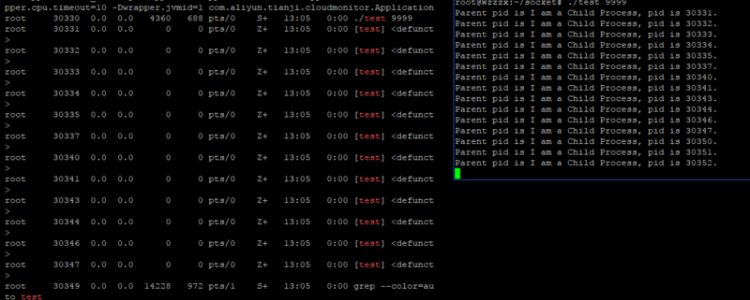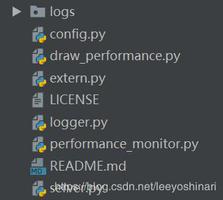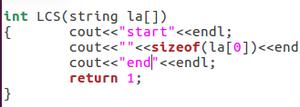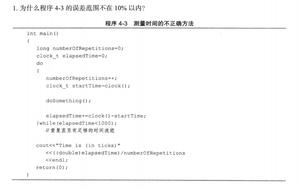【Python】为什么下面这段代码不会产生大量的僵尸进程??
代码如下,我觉得补上几张图吧。真的出现了这个奇怪的问题。
照理说应该会产生大量的僵尸进程的丫。可是我查看了进程却只有一个当下的僵尸进程。为什么呢?
系统是Ubuntu16.04,python版本是3.5
代码一
import multiprocessing as mpimport os
import time
def pro():
print ("os.pid is ", os.getpid())
if __name__ == '__main__':
print ("parent ", os.getpid())
while True:
p = mp.Process(target = pro)
p.start()
time.sleep(1)
代码一图示:
代码二
如果换成用C来编写一段类似的代码,却会产生大量的子进程。
#include <stdio.h>#include <stdlib.h>
#include <signal.h>
int main()
{
pid_t pid;
while (1){
pid = fork();
if (pid < 0){
puts("fock error");
exit(1);
}
else if(pid == 0){
printf("I am a Child Process, pid is %d.\n", getpid());
sleep(1);
exit(1);
}
else
sleep(3);
}
return 0;
}
代码二图示:
代码三
用python继续写一段没有循环的代码也一样会产生一个僵尸进程
from multiprocessing import Processimport os
import time
def run():
print ("pid is ", os.getpid())
p = Process(target = run)
p.start()
time.sleep(100)
代码三图示:
为什么会这样丫???僵尸进程的产生原因我应该没理解错的吧。就是父进程在子进程死后没有去理会子进程导致的问题。但是代码一和代码二三好像没有什么区别丫,可是代码一却没有产生一堆的僵尸进程,真的不是很理解了。
回答
谢邀,三段代码。第一段比较好理解吧。新建的进程只有一个print,执行完就会结束了,python会自动回收这个子进程,没有僵尸进程的,你看到的应该是主进程吧。
第二段C代码,死循环中有一个 fork 。然后子进程调用 exit 后成为了一个僵尸进程。父进程一直不会关闭。
所以就不断产生僵尸进程了啊,正确的做法是在父进程中回收子进程:
#include <stdio.h>#include <stdlib.h>
#include <signal.h>
int main()
{
pid_t pid;
int status;
while (1){
pid = fork();
if (pid < 0){
puts("fock error");
exit(1);
}
else if(pid == 0){
printf("I am a Child Process, pid is %d.\n", getpid());
sleep(1);
exit(1);
}
else{
wait(&status); // 回收子进程
sleep(3);
}
}
return 0;
}
第三段,额,同第一段,你看到的应该就是主线程了。
---- 分割线 ------
根据题主的截图,我执行了一下,还真是会有一个僵尸进程,惭愧,居然和印象中的不一样。但是这个僵尸进程只有一个,不会像C语言那段代码一样是不断产生的。于是我就去看看python是如何处理子进程的。mutilprossing.Process 继承自 BaseProcess 文件在 Lib/mutilprossing/process.py 中,我们看看它的start方法:
_children = set()class BaseProcess(object):
def start(self):
self._check_closed()
assert self._popen is None, 'cannot start a process twice'
assert self._parent_pid == os.getpid(), \
'can only start a process object created by current process'
assert not _current_process._config.get('daemon'), \
'daemonic processes are not allowed to have children'
_cleanup()
self._popen = self._Popen(self)
self._sentinel = self._popen.sentinel
# Avoid a refcycle if the target function holds an indirect
# reference to the process object (see bpo-30775)
del self._target, self._args, self._kwargs
_children.add(self)
_children 是一个全局的集合变量,保存着所有 BaseProcess 实例,start 函数末尾处 _children.add(self) 将进程对象放入。又注意到 _cleanup() 函数:
def _cleanup(): # check for processes which have finished
for p in list(_children):
if p._popen.poll() is not None:
_children.discard(p)
这下就清楚了,python在子进程start中将进程放入集合,子进程可能长时间运行,因此这个集合上的进程会有很多状态,而为了防止过多僵尸进程导致资源占用,python会在下一个子进程 start 时清理僵尸进程。所以,最后一个子进程在自身程序运行完毕后就变成僵尸进程,它在等待下一个子进程start时被清理。所以 ps 上总有一个僵尸进程,但这个僵尸进程的进程id一直在变化。
python确实做到自动清理了,是我自己混淆了,看来以后要多多看看源码才行了。
关于C语言的僵尸进程上面已经回答了。如果子进程先于父进程退出, 同时父进程又没有调用 wait/waitpid ,则该子进程将成为僵尸进程。
因为你的进程执行完了那一行 print 之后就结束了,如果你的 pro 方法里是一个死循环的话应该就会有大量僵尸进程了。
首先是,主进程退出,子进程或子线程都会退出,这个没什么问题。
再就是下面这段代码,应该是不会产生僵死进程的,因为子进程run方法运行的很快,而主进程sleep 100s,所以不会产生主进程先退出(不知道你是怎么看到有僵死进程的)
from multiprocessing import Processimport os
import time
def run():
print ("pid is ", os.getpid())
p = Process(target = run)
p.start()
time.sleep(100)
第一段程序,你在pro函数里增加个sleep,就能看到有多个子进程了。
def pro(): print ("os.pid is ", os.getpid())
time.sleep(3)
http://blog.sina.com.cn/s/blo...
以上是 【Python】为什么下面这段代码不会产生大量的僵尸进程?? 的全部内容, 来源链接: utcz.com/a/78643.html






